Review: HTC Droid DNA for Verizon Wireless
Nov 16, 2012, 2:20 PM by Eric M. Zeman
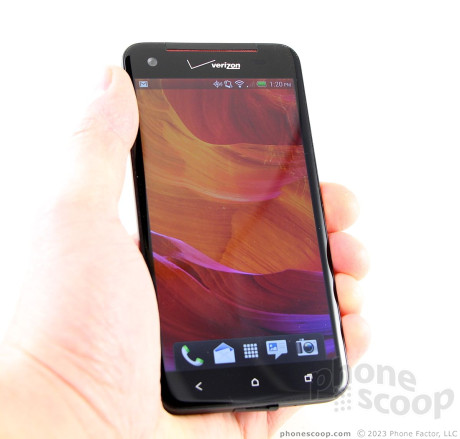
HTC's new superphone is the first to ship in the U.S. with a 1080p HD display. The Droid DNA for Verizon Wireless has more to offer than a good-looking screen, though. Phone Scoop's full review dives deep into all the DNA's features.
Form
Is It Your Type
The HTC Droid DNA is the logical phone for those who want the latest and greatest, with the bestest and mostest stuff. It shoots for the moon in terms of specs, design, and of course that dazzling 1080p HD display.
Body
The HTC Droid DNA is aptly named. The design is the ultimate cross-breeding of all the devices HTC has released this year. It has HTC in its blood.
Unlike HTC's colorful Windows Phone designs, the DNA is an inky black slab. The all-glass front face is glossy pitch black. The back is a matte-black surface. In between are red metal bands that run down the side edges, sort of like the paint designs seen on sports cars from the 80s. Since the DNA is being sold by Verizon, it can't help but pick up some additional red accents here and there, including a circle around the camera lens, the screen lock button, and the earpiece grill. Yes, the Droid DNA even has some Verizon blood in it.
The most impressive feature of the Droid DNA is probably its size. For a device that packs a 5-inch display, it's deceptively small. HTC did a great job keeping the footprint as small as possible. In fact, it is about the same size as the HTC One X, which has a smaller display. If you're worried about it pushing Galaxy Note II dimensions, don't. It is significantly smaller than the Samsung's Note or Note II, and far more comfortable to hold and use.
The back surface has a soft-touch finish which gives it some grip in the hand. Rich didn't care for the feel of the side edges, and neither did I. When you try to grab the phone tightly, they feel hard and pointy, and are angled slightly. That said, the quality of the materials and fit-and-finish are solid. All the seams fit together snugly, and the weight (which is just right) gives the phone a solid feel that says "I'm not cheap."
Three capacitive buttons are positioned below the display, very close to the bottom edge of the phone. They are the now-familiar three buttons for Android 4.x: Back, Home, Multi-task. The buttons are easy to see even when they're not lit.
The rest of the controls are a bit fussy for my tastes. The lock screen button - which is on the top of the phone - is too flush with the surface. I didn't care for the travel and feedback very much. The same goes for the volume toggle, which is on the right edge. It is too flush with the surface and offers too little travel and feedback. There's a little hatch covering the microUSB port on the bottom edge. Why HTC bothered with a hatch at all is beyond me. Worse, it is an annoying and finicky hatch that I'd just as soon cut off the phone than deal with every single day. The tray for the SIM card is buried in the top edge of the phone and requires a tool to eject. There's no dedicated camera button.
Sadly, you cannot access nor remove the battery. It is buried inside the DNA. The DNA also doesn't offer expandable storage. You're stuck with the measly 16 GB built into the device, which may not be enough to fit a single 1080p HD movie.
Overall, the Droid DNA is just what I expect HTC to design for Verizon Wireless.
Performance
Screen
There probably aren't enough superlatives in the English language to cover my thoughts on the DNA's display. It measures 5 inches across the diagonal and packs a whopping 1920 x 1080 pixels. That's 440 pixels per inch, and a full High Definition display. When you consider that it has as many pixels squished into a 5-inch screen as there are on a 50-inch television, you get a better idea of how dense the pixels are. It is insanely sharp and the Super-LCD 3 technology means it's hella bright. My only complaint is that colors aren't as ridiculously oversaturated as they are on Samsung's Super AMOLED display. They're merely good. Otherwise: wow.
Signal
I was able to test the DNA in NYC and around New Jersey. I had absolutely no trouble with it on Verizon's 3G and LTE 4G networks. It connected to both and the signal indicator rarely dipped below two bars. More to the point, I was always able to make a call when I needed to, and those calls didn't drop. Surfing the web on LTE was consistently speedy. The DNA didn't have any issues when switching from LTE to 3G and back, and always downloaded apps in a jiffy.
Sound
I was impressed with the volume and sound quality of the DNA. I had to make several calls while walking down a busy avenue in Manhattan during rush hour. Not only was I able to hear my conversations over noisy buses and honking taxis, but those calls were clear and free of static and other interference. The DNA is one of the better voice phones I've tested from HTC this year. The speakerphone is also quite loud and demonstrated clear calls. Ringers and alerts are always going to get your attention if you have them set loud enough, but the vibrate alert was a bit weak.
Battery
Battery life of LTE smartphones has come a long way in the last year. The DNA includes a 2,020mAh battery, which provides enough juice to use it for an entire day, even when under LTE coverage. In fact, I had a hard time running the battery down, even with intensive use. It consistently lasted longer than 24 hours.
Basics
Menus
The DNA runs Android 4.1 Jelly Bean with HTC Sense 4+. The system software and user interface are similar to those of the other HTC phones released this year. Verizon was sure to add some of its own design flairs.
The lock screen on the DNA offers a handful of customizable shortcuts. The defaults are phone, mail, messages, and camera, but you can adjust these. One useful lock screen feature is that you can have a camera shortcut and a passcode at the same time. You can also set notifications (email, calendar, SMS messages) to appear on the lock screen.
One cool feature? The notification light that's on the front of the phone is duplicated on the back of the phone. In other words, if you put the phone face down on a desk or table, there's a little light on the back next to the camera that blinks when you have new emails, missed calls, and new SMS messages. Very thoughtful.
The drop-down notification shade collects notifications and you can dismiss individual notifications by swiping them sideways. Access to the full settings menu is available from the notification shade, but access to on/off toggles for the radios has been removed from the notification shade.
Apps in the app menu are laid out in a grid in stock Android fashion. The main app listings can be customized however you wish, and that ranges from alphabetical grids to custom grids to alphabetical lists, and so on.
Sense 4+ means you have plenty of customization options. There are different scenes (user profiles) that can be applied. Each of the profiles can be given a different skin. And event of the skins can be given its own wallpapers, and so on. Trust me when I say the DNA gives you lots of room for personalization.
As for performance, the DNA has a quad-core Qualcomm Snapdragon S4 Pro processor on board. Each core runs at 1.5GHz. To call the DNA a fast phone is an understatement. Nothing I threw at it slowed it down. It's quick at everything.
Calls
HTC uses the same old calling and contact skins it has used forever with its Sense phones. I'm actually disappointed that HTC hasn't done much to update these functions.
The phone app itself offers the basics, including speakerphone, Bluetooth, and access to other apps such as the contact list.
Perhaps the best part of HTC's customizations to the phone software are the gesture-based actions. For example, if the phone rings, you can turn it over to silence the ringer. Or, if you pick it up, the ringer won't silence completely, but will drop significantly in volume. You can also set the DNA to recognize when it is in your pocket (it senses darkness) so that it will automatically vibrate as well as ring. Lastly, the DNA can automatically switch to the speakerphone when flipped over during a call.
As for contacts and calling widgets, they are plentiful. You can set direct dial shortcuts to the home screen, and there are three different styles of widgets for your favorite set of contacts.
Messaging
The DNA doesn't differ much from other Android phones in the messaging department. The individual messaging tools include Gmail, email, SMS, Google Talk, Google+ and Google+ Messenger. Google Voice is conspicuously absent. These are all fine applications that continue to be useful for composing all sorts of messages. There aren't any other IM apps, so Google Talk is your only option out of the box.
In terms of social networking, the DNA offers integration with Twitter and Facebook within the OS. Sign into your social networking account and you can do things such as share photos, or messages from inside other applications more easily. The separate Facebook app is preloaded on the DNA, but the official Twitter app must be downloaded from the Google Play Store.
Extras
Media
With respect to music, the DNA offers a pretty wide range of options. Amazon MP3, Slacker, Google Play Music, and the bare-bones music app are all pre-installed. These apps each have their pros and cons. Amazon and Google Play can be used for purchasing music, as well as streaming purchased tracks to the DNA. Slacker offers free and for-pay streaming services. It's a bummer that there's no FM radio, but TuneIn Radio is included.
On the video front, the DNA includes the stock YouTube app, a simple video player, Google Play Movies, and Verizon's Viewdini app. Viewdini is a video search app. Punch in the content you want to watch, and Viewdini will show you where you can watch it, including YouTube, Hulu, Netflix, and other services. You can download (purchase or rent) video content (TV shows and movies) from the Google Play Movies store.
Thanks to the Beats Audio integration, music and video sound great through the DNA. I used several different sets of earbuds/headphones and was impressed with the quality. What I really like is that the Beats software has been integrated deeper into the OS, so it works with all media apps on the device.
Camera
The quad-core processor and HTC's dedicated ImageChip have a huge impact on the DNA's camera. It is by far the fastest camera app I've used in recent memory. It opens in a blink and is ready to shoot in about one second. There's no physical camera/shutter button, so you have to take care of everything from the display.
I like that the entire 5” display is used as the viewfinder. It provides a nice big canvas for composing images. The software controls are kept to a minimum on the screen and are lined up along the left edge of the viewfinder. Each uses drop-down menus and is a snap to figure out.
The options are endless. The DNA provides tons of tools to make picture (and video) taking a finely-tuned experience. Some of the stand-out features include continuous shooting, auto smile capture, easy HDR and panorama modes, and slow-motion capture in the video app. As with One-series phones, you can shoot still images while recording video.
Photos
The DNA produces some of the sharpest images I've seen from a smartphone. Not only are the images sharp, but they are accurate to the scene and reproduce the lighting conditions exactly as they are in real life. White balance is spot on, and colors aren't oversaturated or overblown. I am impressed with the results I achieved and am sure you will be, too.
Video
The 1080p HD video I shot with the DNA looked excellent. It, too, shows razor-like focus and proper exposure. The video looked smoother than 1080p HD video I've seen from most other phones, thanks to stabilization in the video camera's software. Videos captured with the DNA are absolutely worth sharing.
Gallery
The DNA makes few changes to the stock Android 4.x gallery app. The gallery collects photos based on where they are stored, such a your Picasa or Facebook account, as well as those on the phone itself. The tools make it easy to sort through and organize photos, see them on a map, as well as share them to various social networks.
I am most disappointed by the editing features. You can crop and rotate images, and apply effects/filters. You can fix red eye or alter exposure, contrast, and brightness. There are a lot of filters, but that makes the gallery app feel more like Instagram than anything else.
Apps
As usual, most of the Verizon-branded services are on board, such as VZ Navigator, Verizon Viewdini, My Verizon, V CAST Tones, etc. Most of these cannot be deleted, but some can be "deactivated." Deactivated apps no longer appear in the main app menu, but still reside in the phone's storage. Speaking of which, the DNA only has 16GB on board — of which users have access to only 11GB.
Bluetooth
The DNA's Bluetooth radio works perfectly. It paired with every device I could find. Phone calls, in particular, sounded excellent when sent through my car's hands-free system. Music sounded very good when sent to stereo Bluetooth headphones. I had no issues pushing files to/from the DNA.
Browser
The DNA runs the stock Android browser. There are plenty of alternative browsers available in the Google Play Store if you want to use something else. No matter which browser you use, web sites load in an instant thanks to the solid LTE 4G performance and quick processing powers of the DNA.
Clock
The DNA is a virtual cornucopia of clocks. There are more than a dozen clock widgets, in addition to other widgets that also happen to include a clock (such as the weather). What's even better is that you can use these same clock widgets to serve as the clock for the lock screen. The selection is great, and can be set to match just about any wallpaper you might use.
GPS
The GPS worked well. The DNA's GPS radio was able to lock on my position in less than 10 seconds, and was accurate to within about 10 feet. Paired with Google Maps, the location capabilities are excellent. Thanks to the speedy network access, fast application processor, and accurate GPS radio, real-time directions were spot on. Verizon's VZ Navigator software is just as capable at point-to-point directions, but doesn't work offline (Google Maps does) and it also costs $10 per month, while Google Maps is free.
Wrap-Up
The HTC Droid DNA for Verizon Wireless is a heck of a phone. The performance of nearly every feature bests the competition.
The display is simply incredible and the quad-core processor generates real-world results in performance and speed. Toss in good performance on Verizon's network, excellent call quality, and good battery life and you have a solid foundation on which HTC builds an excellent smartphone.
The camera functions very well and produces good results. The DNA offers plenty of avenues through which to consume media. And the Sense user interface leaves the use with an abundance of customization options.
Probably my biggest gripe with the phone is HTC's software, which feels more intrusive on the DNA than on other phones. That's a small price to pay, however, for all the good features this phone offers.
The Droid DNA is HTC's best phone yet.
Comments
battery life
(continues)
I see the TuneIn radio to stream music over the network...
(continues)
(continues)
16 GB non-expandable storage
Otherwise, looks pretty cool. I want to look up all the specs now.
Wow the spec driven DNA! Its like getting a Cadillac with an AM radio......
I'd be so there if it was "sense-less".
I predict in the near future, phones will be as big a target for hackers as computers, if not more. When that happens, there will be a need for timely OS updates for ALL phones, whether new or old. Things like Sense get in the way and prevent fast updates, and it's going to be a big problem.
It's better for the hardware mfg's to differentiate themselves through cool hardware design, and leave the OS alone so the software folks can take care of that part.
Scratching head...
My excitement for this phone has been quelled by what I feel are 2 MAJOR flaws:
1 - Non-Removable Battery.
2 - No External Storage (c'mon, I have a 64gb in my Rezound.)
Must admit I'm tempted, but I think I'll wait for the next train...
Man....
Literally. Computer, TV, Phone, Tablet, any of them.


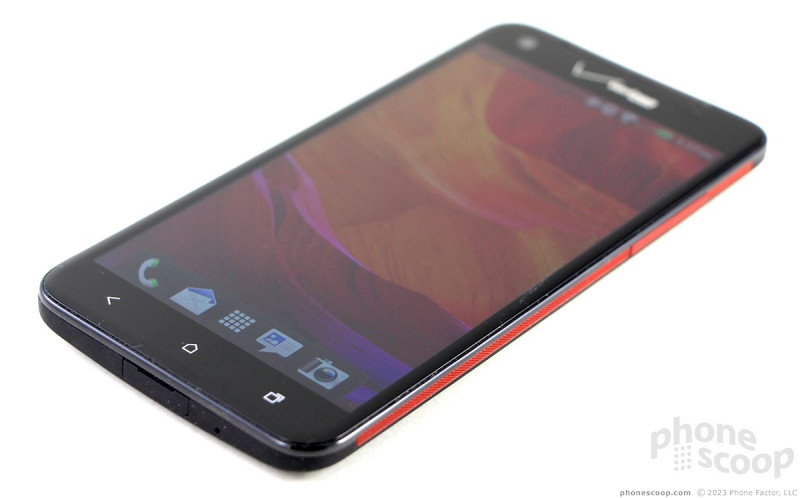















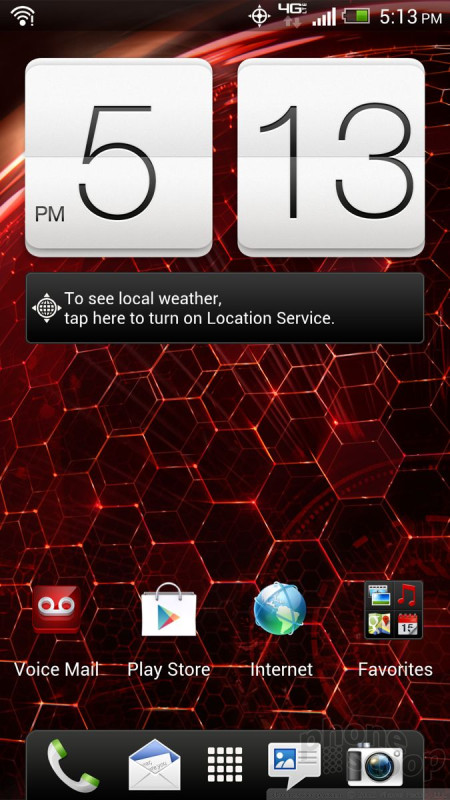






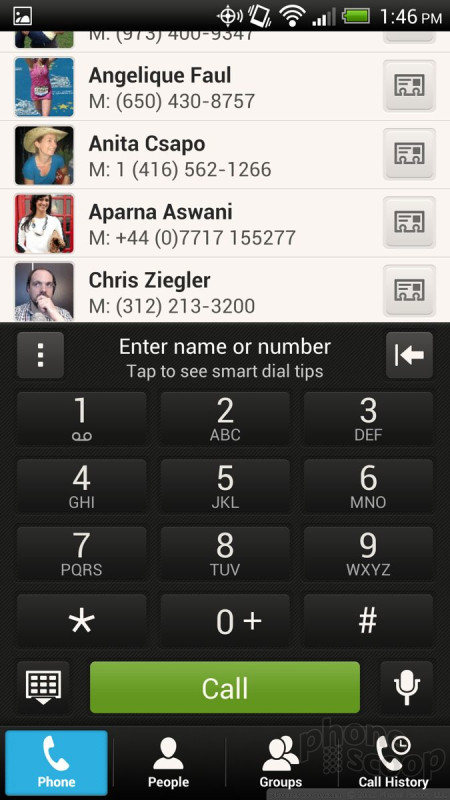



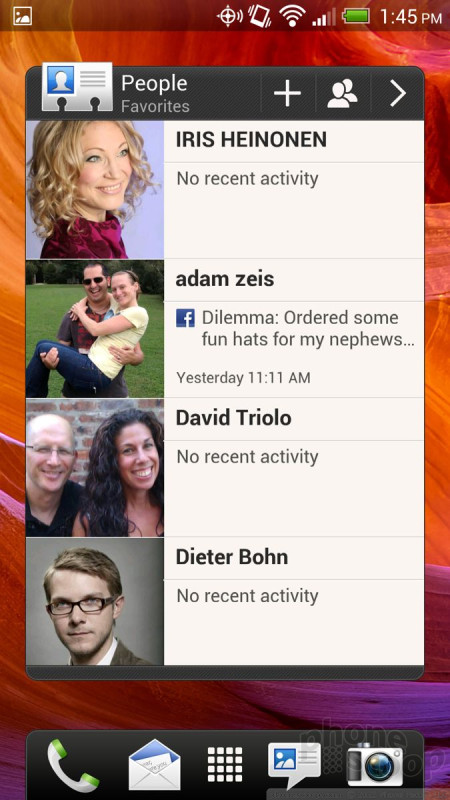


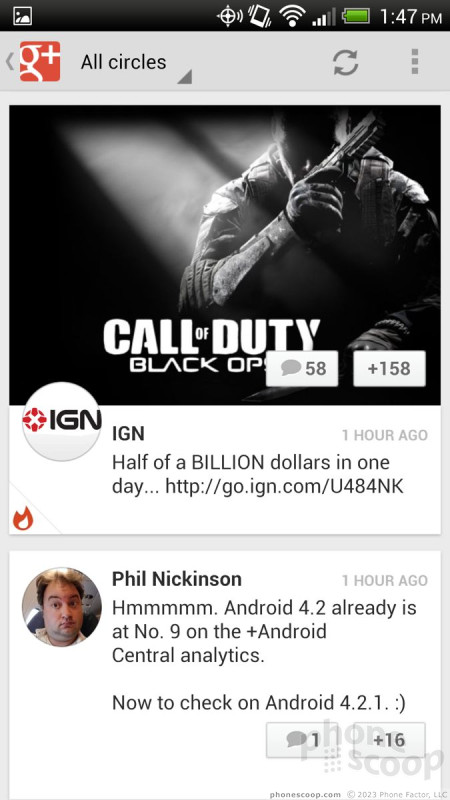



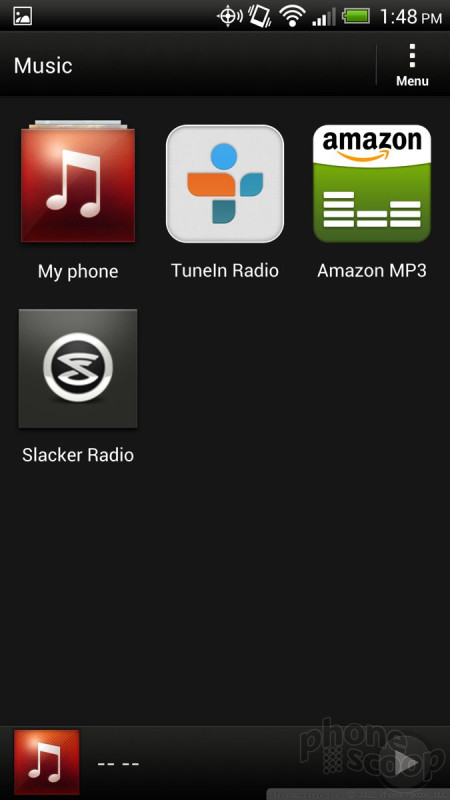






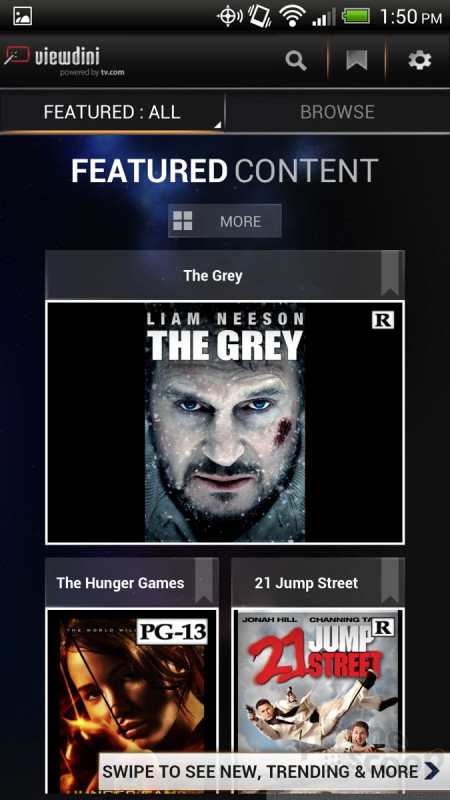



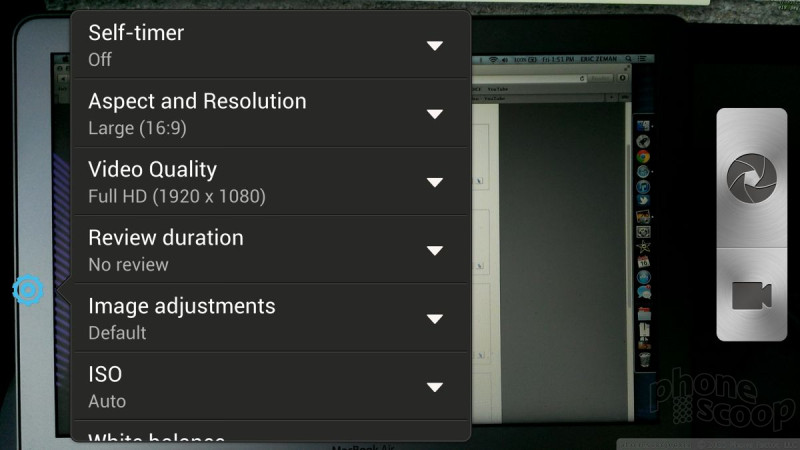



















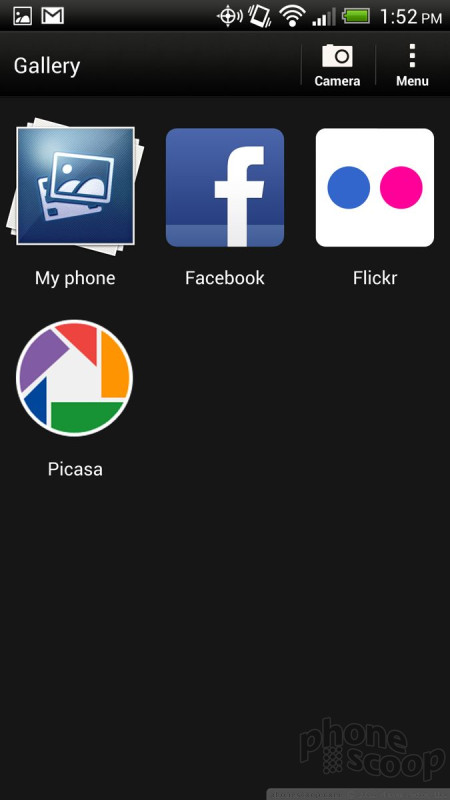





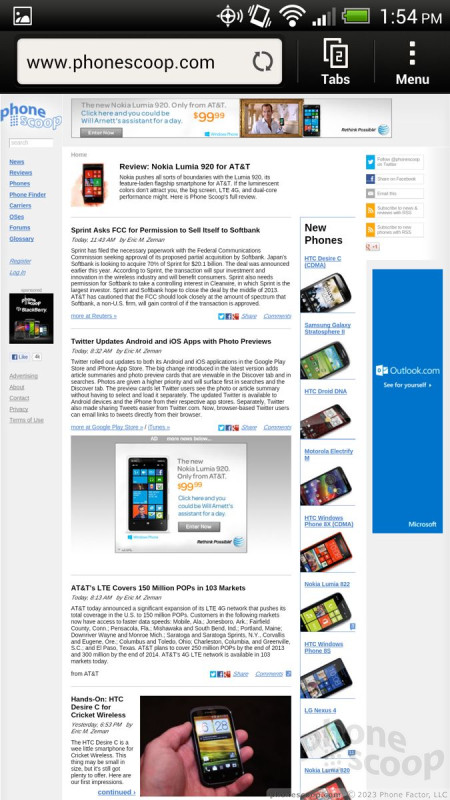



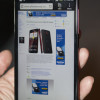 Hands On with the HTC Droid DNA for Verizon
Hands On with the HTC Droid DNA for Verizon
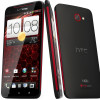 Droid DNA Boasts 5-inch 1080p HP Display
Droid DNA Boasts 5-inch 1080p HP Display
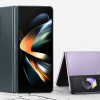 Samsung Refines its Foldable Phones
Samsung Refines its Foldable Phones
 iPhone 14 Plus Offers a Big Screen For Less
iPhone 14 Plus Offers a Big Screen For Less
 HTC Droid DNA
HTC Droid DNA



